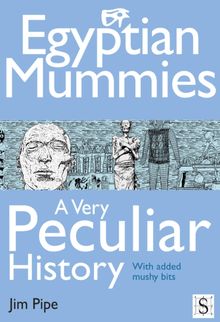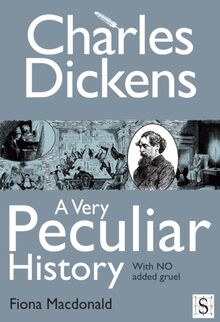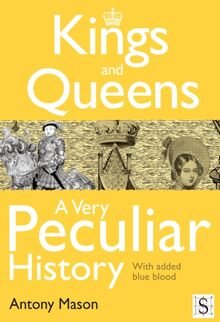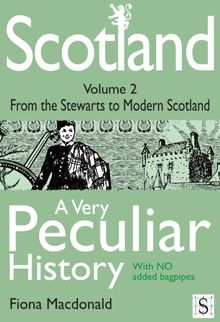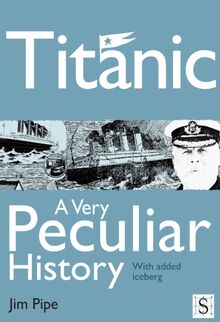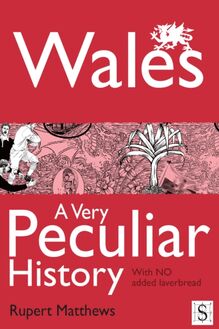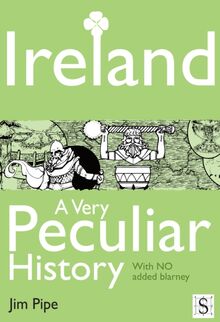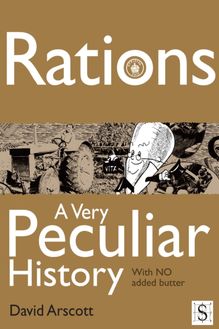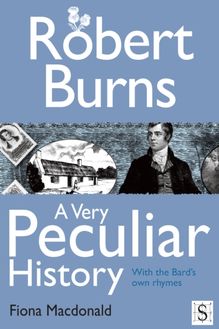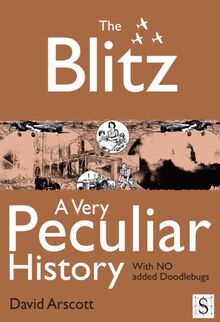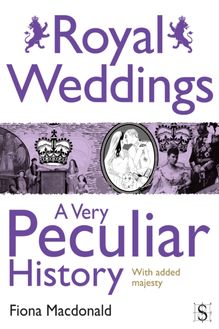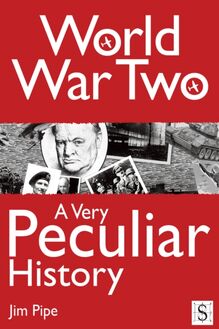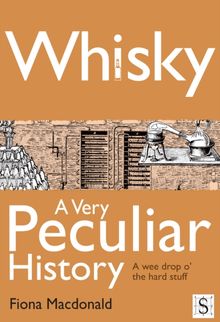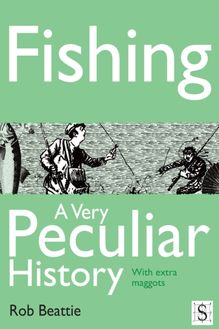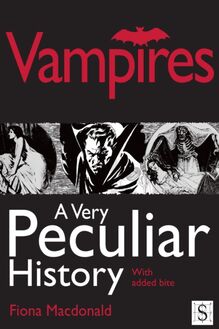-
 Univers
Univers
-
 Ebooks
Ebooks
-
 Livres audio
Livres audio
-
 Presse
Presse
-
 Podcasts
Podcasts
-
 BD
BD
-
 Documents
Documents
-
- Cours
- Révisions
- Ressources pédagogiques
- Sciences de l’éducation
- Manuels scolaires
- Langues
- Travaux de classe
- Annales de BEP
- Etudes supérieures
- Maternelle et primaire
- Fiches de lecture
- Orientation scolaire
- Méthodologie
- Corrigés de devoir
- Annales d’examens et concours
- Annales du bac
- Annales du brevet
- Rapports de stage
La lecture à portée de main
Vous pourrez modifier la taille du texte de cet ouvrage
Découvre YouScribe en t'inscrivant gratuitement
Je m'inscrisDécouvre YouScribe en t'inscrivant gratuitement
Je m'inscrisEn savoir plus
Vous pourrez modifier la taille du texte de cet ouvrage
En savoir plus

Description
Informations
| Publié par | Andrews UK |
| Date de parution | 05 janvier 2012 |
| Nombre de lectures | 0 |
| EAN13 | 9781908759245 |
| Langue | English |
Informations légales : prix de location à la page 0,0300€. Cette information est donnée uniquement à titre indicatif conformément à la législation en vigueur.
Extrait
Title Page
WHISKY, A VERY PECULIAR HISTORY
A wee drop o’ the hard stuff
Written by
Fiona Macdonald
Created and designed by David Salariya
Publisher Information
First published in Great Britain in MMXI by Book House, an imprint of
The Salariya Book Company Ltd
25 Marlborough Place, Brighton BN1 1UB
www.salariya.com
www.book-house.co.uk
Digital edition converted and distributed in 2012 by
Andrews UK Limited
www.andrewsuk.com
Editor: Jamie Pitman
Assistant editor: Jodie Leyman
Illustrated by: Mark Bergin
Additional Artwork: David Antram, Penko Gelev, John James, Li Sidong, Mark Williams
© The Salariya Book Company Ltd MMXI
All rights reserved. No part of this publication may be reproduced, stored in or introduced into a retrieval system or transmitted in any form, or by any means (electronic, mechanical, photocopying, recording or otherwise) without the written permission of the publisher. Any person who does any unauthorised act in relation to this publication may be liable to criminal prosecution and civil claims for damages.
Every effort has been made to trace copyright holders. The Salariya Book Company apologises for any omissions and would be pleased, in such cases, to add an acknowledgement in future editions.
Visit our website at
www.book-house.co.uk
or go to
www.salariya.com
for free electronic versions of:
You Wouldn’t Want to be an Egyptian Mummy!
You Wouldn’t Want to be a Roman Gladiator!
You Wouldnt Want to Join Shackleton’s Polar Expedition!
You Wouldn’t Want to Sail on a 19th-Century Whaling Ship!
Dedication
To my kind and hospitable neighbours: Slàinte mhath!
FMacD
Quotes
O thou, my Muse! Guid auld Scotch drink,
Whether through wimplin’ worms thou jink,
Or, richly brown, ream o’er the brink,
In glorious faem,
Inspire me, till I lisp and wink,
To sing thy name!
Robert Burns, ‘Scotch Drink’, 1786
(guid auld = good old; wimplin’ = curling; worms = parts of distilling apparatus (cooled copper pipes in which vaporised alcohol condenses); jink = twist and turn; ream = flow; faem = foam; lisp = speak with difficulty)
Introduction: Scotland in a bottle?
Whisky is a great industry in Scotland. Whisky is a great pleasure in the rest of the world.’ So says French whisky writer Jean-Marie Putz. The statistics agree with him. In Scotland, around 10,000 people are employed full-time making and selling Scotch whisky, while a further 35,000 jobs are linked to the whisky trade. In 2007, whisky exports accounted for 13% of Scotland’s overseas earnings, and contributed over £2.7 billion to Scotland’s economy. Worldwide, over 300 million litres are sold – and presumably drunk with pleasure – every year.
A magic potion?
Whisky is only a solution of malt (grain sugar), yeast and water, but it has been praised and prized for hundreds of years. It is surrounded by countless legends and beliefs about its supposedly mystical, magical qualities. According to a 17th-century Scottish manuscript, whisky will (in this order):
•heal wounds
•polish brass
•sharpen the wits
•make a sad man happy
•preserve youth
•help women to conceive
•make good wine out of stale and much, much, much more.
Today, inexpensive, mass-produced whisky blends are widely available. They are piled high and sold cheap on supermarket shelves – although they are perhaps not yet cheap enough to use as metal polish. But fine whisky is still a rare and costly luxury; a single bottle can cost a small fortune.
The most expensive whisky in the world?
In November 2010, international auction house Sotheby’s in New York sold what was advertised as ‘the world’s most expensive bottle of whisky’. It was filled with highly prized 64-year-old malt whisky from Scotland’s famous Macallan distillery.
The price? Estimates started at US $150,000, but the bottle actually fetched US $460,000 (GB £288,000). (The proceeds were donated to a charity that supplies clean drinking water to developing countries.) But perhaps the most valuable part of this very, very costly item was the decanter it came in. Hand-crafted by Lalique of France in exquisite crystal, it was a unique work of art.
On the other hand, if you’d like to drink history, the last surviving bottle in the universe of Irish Nuns’ Island whiskey also went on sale in 2010. The Nuns’ Island distillery closed almost 100 years earlier. Who knows what the whiskey will taste like? You can find out if you have the asking price for such a unique rarity: £100,000.
Tasting notes
The taste of whisky is easy to recognise but extremely difficult to describe. Unbelievable numbers – and combinations – of adjectives and nouns have been used to communicate its appearance, flavour and aroma, sometimes successfully:
•beautiful custard poured over barley pie
•bandages and antiseptic
•Parma violets, with some damp hay
•busy, sweaty sock
•a slight hint of liquorice/trout fishing basket
•wet cement
•freshly hung wallpaper
•celery and citrus
•pillow-soft vanilla
•a tang of gunpowder and a warm nuttiness.
In the case of one very memorable bottle:
•‘It doesn’t just hit the palate, it caresses it with the nubile fingers of a young lady and the talons of an eagle.’
Jim Murray’s Whisky Bible 2010
One further fact for whisky connoisseurs to consider: different casks and bottlings of famous whiskies are known not as prosaic ‘packaging’, but as much more poetic ‘expressions’. Do we wonder why?
Whisky’s worldwide winners
The name of ‘Scotch’, together with its composition, packaging and promotion, is strictly protected and controlled – and yet local ‘whiskies’ are made and enjoyed all round the world, from Argentina to New Zealand. In 2010, a whisky made in India was chosen as third finest in the world, out of almost 4,000 different bottles! An American whiskey came first, and a Scottish whisky second. Indians now drink more whisky than any other nationality. They consumed 1,179 million litres in 2009 – and two thirds of this was produced in India.
Jekyll and Hyde?
Like the Scots themselves, and like the famous two-faced character invented by Scottish writer Robert Louis Stevenson (1850–1894), whisky is paradoxical. It takes great skill and many years to produce, but is often carelessly consumed in seconds. It wrecks budgets, ruins marriages, wastes lives – and yet few celebrations are complete without it. Nor are funerals. Traditionally, in Scotland, only men accompanied a body to the grave. Then, in even the most sober, upright families, it was an accepted sign of respect to drink ‘the funeral dram’.
Whisky or whiskey?
Both spellings are correct, although ‘whisky’ is normally used by distillers in Scotland, Canada, Japan, Australia, India, Brazil, Wales and elsewhere in Europe (except Ireland).
Scottish whisky is often also called ‘Scotch’ – but never in Scotland! There, it is called whisky, or, more hospitably, ‘a dram’. Although a dram was originally a very small liquid measure used by pharmacists (one eighth of a fluid ounce, or about 3.7 ml – but definitions vary), today it refers to any quantity of whisky offered by a host to a guest, from a thimbleful to an overflowing tumbler.
And remember – in Scotland and Ireland, whisky is always ‘taken’, not drunk. As in: ‘You’ll take a wee dram, Hamish?’
The spelling ‘whiskey’ is said to have been invented by distillers in 19th-century Ireland, to distinguish their high-quality, traditionally made whisky from cheap, bland, ‘industrial’ whisky mass-produced in the Lowlands of Scotland (see Chapter 5). Today, ‘whiskey’ is commonly used by distillers in Ireland, New Zealand and the United States. However, a few American companies, mostly those founded by Scottish emigrants, prefer Scottish-style ‘whisky’.
Wearable whisky?
In 2007, whisky enthusiast Edgar van der Crommert, from the Netherlands, designed a new tartan in honour of Scottish malt whisky. He chose colours and patterns carefully to ‘tell the whisky story’. Each element in the design symbolises either a whisky ingredient, or a stage in the manufacturing process:
1. Yellow lines: ripe barley
2. Brown squares: ploughed fields
3. Black squares: peat
4. Light brown lines: yeast
5. Dark blue squares: spring water
6. Pale blue lines: distilled spirit
7. Brown lines: barrels
8. Black lines: bonded warehouse
9. Faint blue lines: ‘the angels’ share’ (evaporating spirit)
10. White lines: glass bottles
11. Wide yellow stripe: the end product.
The very devil…
Whisky is glamorous and seductive. It plays a strong supporting role in classic Hollywood films of the 1940s and 1950s, and in stylish US detective stories written by the likes of Dashiell Hammett and Raymond Chandler. It’s drunk by gumshoes, gangsters – and their molls. Like them, it’s smart and stylish.
Whisky is sordid and repulsive. It features in many gritty novels of despair and self-destruction, mostly by Scottish authors. These range from the deliberately dour House with Green Shutters (George Douglas Brown, 1901 – the hero gets drunk and murders) to the defiant No Mean City (H. Kingsley Long and Alexander McArthur, 1935 – the hero gets drunk and is murdered) and the tough, tragic Morvern Callar (Alan Warner, 1995 – where the heroes – or victims – mainline on Macal
-
 Univers
Univers
-
 Ebooks
Ebooks
-
 Livres audio
Livres audio
-
 Presse
Presse
-
 Podcasts
Podcasts
-
 BD
BD
-
 Documents
Documents
-
Jeunesse
-
Littérature
-
Ressources professionnelles
-
Santé et bien-être
-
Savoirs
-
Education
-
Loisirs et hobbies
-
Art, musique et cinéma
-
Actualité et débat de société
-
Jeunesse
-
Littérature
-
Ressources professionnelles
-
Santé et bien-être
-
Savoirs
-
Education
-
Loisirs et hobbies
-
Art, musique et cinéma
-
Actualité et débat de société
-
Actualités
-
Lifestyle
-
Presse jeunesse
-
Presse professionnelle
-
Pratique
-
Presse sportive
-
Presse internationale
-
Culture & Médias
-
Action et Aventures
-
Science-fiction et Fantasy
-
Société
-
Jeunesse
-
Littérature
-
Ressources professionnelles
-
Santé et bien-être
-
Savoirs
-
Education
-
Loisirs et hobbies
-
Art, musique et cinéma
-
Actualité et débat de société
- Cours
- Révisions
- Ressources pédagogiques
- Sciences de l’éducation
- Manuels scolaires
- Langues
- Travaux de classe
- Annales de BEP
- Etudes supérieures
- Maternelle et primaire
- Fiches de lecture
- Orientation scolaire
- Méthodologie
- Corrigés de devoir
- Annales d’examens et concours
- Annales du bac
- Annales du brevet
- Rapports de stage
